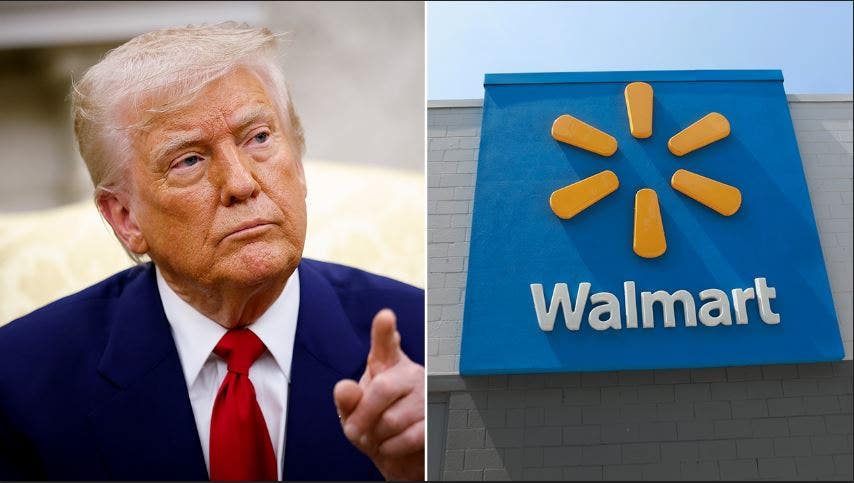Tariffs and Retail Margins: The Silent Erosion of Consumer Staples Value
The escalating war of protectionist policies is not merely a geopolitical skirmish—it is a structural threat to the profitability of low-margin retailers, with Walmart’s recent warnings serving as an ominous bellwether for the broader consumer staples sector. As tariffs reshape global supply chains, the era of "everyday low prices" is under siege, compelling investors to reassess the viability of companies reliant on thin margins and imported goods. The math is stark: when a 30% tariff on Chinese imports collides with retail margins of less than 5%, the result is not just a pricing dilemma—it is a systemic vulnerability.
Walmart’s Q2 2025 earnings reveal the tension at the heart of its business model. While adjusted EPS of $0.67 narrowly beat estimates, net profit fell 13% year-on-year to $4.45 billion. The culprit? Tariffs. CEO Doug McMillon admitted the "magnitude of the tariffs" has left no choice but to raise prices on discretionary items like home goods and toys—a move that risks alienating cost-sensitive shoppers. The company’s domestic sourcing advantage (66% of merchandise) and automation-driven efficiencies (45% of e-commerce automated) have bought time, but cannot offset the relentless cost pressures from international trade barriers.
The data underscores the fragility: Walmart’s U.S. comp sales growth slowed to 4.5% in Q2, down from 5.3% a year prior. Worse, the 90-day tariff pause—meant to calm markets—only exacerbated volatility, as companies rushed to restock, driving up shipping costs and inventory risks. For walmart, the dilemma is existential: raise prices and risk losing customers, or absorb costs and sacrifice margins? The answer, it seems, is both.
Walmart’s struggles are not isolated. The consumer staples sector, built on razor-thin margins (Walmart’s U.S. retail margin hovers around 3.5%), is uniquely exposed to protectionism. Consider the broader implications:1. : 40% of Walmart’s imported goods fall under tariff categories, but smaller retailers lack the scale to negotiate or diversify. 2. : Tariffs on Chinese goods have already added ~1.5% to U.S. consumer prices, squeezing disposable income and dampening demand for non-essentials. 3. : Amazon’s pre-pandemic stockpiling and vendor partnerships allow it to delay price hikes, widening the gap with Walmart in discretionary categories.
The result? A sector bifurcated between giants with global leverage and smaller players forced to choose between profitability and market share. For investors, this is a call to scrutinize balance sheets and sourcing strategies.
The writing is on the wall: protectionism is here to stay, and consumer staples investors must adapt. Here’s how to position portfolios for this new reality:1. : Companies like Kroger (KR) or Costco (COST), with stronger brand loyalty and higher gross margins (Costco’s margin is nearly double Walmart’s), offer better insulation against cost shocks. 2. : Retailers reliant on Chinese manufacturing—e.g., Target (TGT) or Best Buy (BBY)—face disproportionate risks. 3. : Walmart’s automation investments (e.g., regional distribution centers) are a model—prioritize firms with similar cost-reduction technologies. 4. : Consider shorting pure-play discount retailers like Dollar General (DG) or Ross Stores (ROST), which lack Walmart’s scale and are more vulnerable to margin compression.
Walmart’s tariff-driven margin squeeze is not a temporary blip—it is a harbinger of a structural shift. In a world where protectionism and inflation are the new constants, the consumer staples sector must evolve or perish. Investors who cling to legacy low-margin models risk obsolescence. The path forward favors agility, diversification, and the courage to rethink the very definition of "everyday value." The time to act is now—before the next round of tariffs hits the shelves.









:max_bytes(150000):strip_icc()/GettyImages-2209422147-5da65cad90374aa0abfa699b5468fccc.jpg)

:max_bytes(150000):strip_icc()/GettyImages-2151427806-0eaf1bd2aa074f06a7de8cafcdbdc169.jpg)
